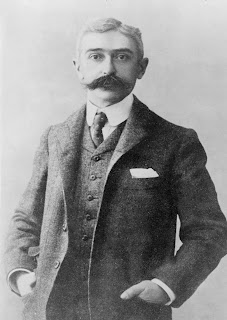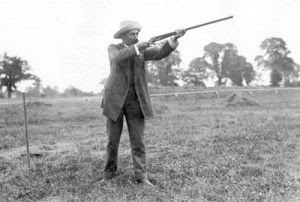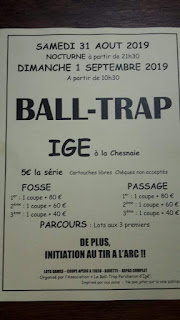dimanche 25 août 2019
Trap shoot or pigeon shoot? Views from both sides of the Atlantic
Last month it was garbage. This month it’s guns. Guns in El Paso, in Dayton, in Riverside, California, and in nearby Philadelphia, PA. France too has had its share of guns and death this summer. In July, a shootout at a gas station in the Var region of the South of France left three dead. In this same region, in mid-August, police shot and injured a couple fleeing a routine road check.
In France, as opposed to most states in the USA (there are 8 exceptions), assault weapons are banned and the purchase of other arms is highly regulated by the state. French law divides weapons into four categories, ranging from D to A. Category D is limited to weapons sold over the counter, including knives, truncheons and tear-gas bombs. Category A is restricted to weapons of war, such as assault rifles, outlawed for personal use. Categories B and C include guns and rifles whose sale is restricted to licensed hunters age 16 and over and to marksmen belonging to a federally registered gun club. Those wishing to purchase a semi-automatic rifle must undergo a thorough background check.
These restrictive laws have not prevented terrorists from obtaining weapons of war. On November 13, 2015, 131 persons attending a concert at the Bataclan Theater in Paris were killed by the fire of assault weapons. The guns used by the perpetrators, 7 of whom were killed by the police, were obtained on Europe’s lucrative black market in illegal arms. Surely they paid much more than your average American gun aficionado purchasing an assault rifle at a gun show or on-line.
Concerning guns and their use, Americans and the French have points in common. In both countries, avid hunters impatiently await the beginning of hunting season. Many hunters are also committed environmentalists. In both countries, gun clubs and shooting ranges abound. In France, sharpshooting is a respected sport and the French have not forgotten that the founder of the first modern Olympic games, the Frenchman Pierre de Coubertin, a fine marksman himself, pushed for making sharpshooting an Olympic sport.
That was in 1900 at the Paris games and one of the forms it took was a pigeon shoot.
In that same year, in Pennsylvania, Frank Coleman won his first state championship in a live-bird shooting competition.
To readers over 40 and perhaps to some younger ones as well, that name may sound familiar. Born in 1874 on a farm near Hegins, Coleman went on to become an international champion of his sport. Until 20 years ago, he was honored each year at the Fred Coleman Memorial Labor Day Live Pigeon Shoot and Homecoming, held at the community park in Hegins. The idea for the shoot dates back to 1933. Locals, proud of their native son, hoped to use his fame to put Hegins on the national map. They succeeded in more ways than one.
As many readers know, the shoot came to an end in 1999 because of a ruling of the State Supreme Court, which did not, however, outlaw live pigeons shoots. Pressure from animal rights groups, the Humane Society and the SPCA, national attention of a kind the town had never asked for, and protesters outnumbering shooters did the rest. The event was simply cancelled and since then, there has been no public live pigeon shoot in Hegins, marking the demise of a tradition that many locals continue to support.
Live pigeon shoots have a long history and the sport had its beginnings in England. There, in the 18th century, it was practiced by the aristocracy. When some of them became colonists in North America, they brought the sport with them. On American soil, it became more democratic; live pigeon shoots were even associated with pioneer values. The American male had to know how to use his rifle to protect his family. The quantities of pigeons released in a shoot reflected the endless abundance of the American wilderness.
Yet, early on, many were not at ease with this sport and its seemingly wanton killing. In 1872, the New York Times criticized its “useless cruelty.” By 1903, the Grand American Trap Shoot had dropped the pigeon shoot, replacing the birds with clay traps. And though de Coubertin had introduced live pigeon shooting as an Olympic sport, it was not officially recognized because of its cruelty.
Back in 1881, the Pennsylvania Supreme Court heard its first case concerning pigeon shoots and animal cruelty statutes. Supreme Court Justice Edward M. Paxson declared that all birds, be they caged or free, were placed here by the Lord for humans to use as they would. The live pigeon shoot could go on.
In 1923 the sport was outlawed in Great Britain. France waited till 1976 though the tradition of the pigeon shoot has retained its aristocratic cachet. Deep in the Bois de Boulogne, a vast forest and park at the western edge of Paris, there’s a club called “Tir au pigeon,” “Pigeon shoot.” Founded in 1899, it’s still one of the city’s most exclusive. Of course, Baron de Coubertin was one of its first members.
In le Perche, the region of my country home, skeet or trap shooting is a popular sport. It’s called “ball-trap,” two English words borrowed by the French. A big event is taking place next weekend, Labor Day weekend in the US. It sounds a lot like the Hegins homecoming used to be: a shooting range, stands selling food and drink, lots of picnic tables. All the ingredients are there, except the live pigeons.
Without them, the Hegins shoot came to an end, and I’ve often wondered why the tradition could not have continued with clay traps. The same marksmanship skills are required and both skeet and trap shooting are Olympic sports.
Back in its heyday, at a live pigeon shoot in Hegins, up to 9,000 birds were released. About 7,000 of them were killed; about 2,000 escaped. Trapper-boys collected the birds in the field, breaking the necks of those still alive.
That’s a lot of birds, a lot of death, a lot of blood; and in this killing world of ours, I’d say, the less the better. And if I may put in my two cents on the controversial subject with which this article began, the French are right: assault rifles are weapons of war.
******************************************************************
Information about the history of the Hegins shoot and pigeon shoots in Pennsylvania comes from “Contesting Tradition: The Deep Play & Protest of Pigeon Shoots,” Simon J. Bronner, The Journal of American Folklore, Vol. 118, N° 470 (autumn 2005), pp. 409-452, consulted on JSTOR.
Inscription à :
Articles (Atom)







